Fuel Pressure Regulator
A fuel pressure regulator's task is simply to insure fuel going to the carburetor or injectors arrives at a specific pressure, not volume
Carbureted Engine Fuel Pressure Regulator
On a normally aspirated engine with one (or multiple) carburetors fuel is stored in the fuel tank and typically pulled from the tank by the mechanical fuel pump which, in turn, delivers fuel to the carburetor(s). Factory mechanical fuel pumps supply (or at least are supposed to) an acceptable range of pressure for the carburetor designed for that engine.

Fuel pressure regulator (white circle) to fuel pressure gauge
(red square) and fuel line to carburetor (white arrows).
While really not necessary on a mild street engine, a fuel pressure regulator and fuel pressure gauge are put to use on this Chevelle 396 engine. Of course the polished aluminum intake, aluminum rocker arm covers, and Holly 3310 aren't necessary either but they do look good. Not readily apparent here but the dual-feed fuel line is mounted with the inlet towards the back and connected to the pressure gauge with a small length of fuel line hose for a neater installation.
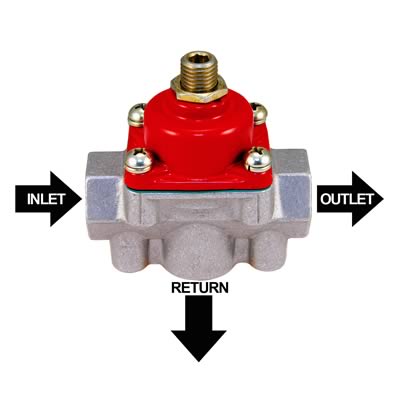
Fuel Pressure Regulator
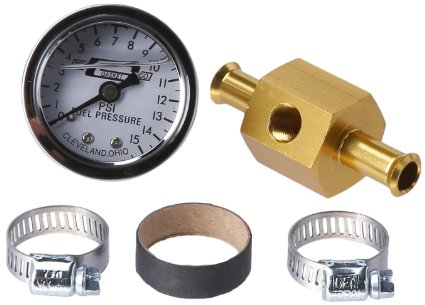
Fuel Pressure Gauge and Installation Kit
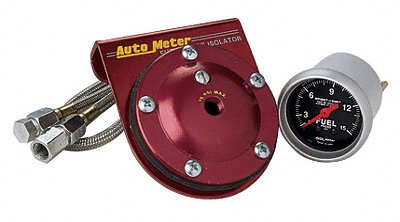
Fuel Pressure Gauge Isolator
A mechanical fuel pressure regulator is placed between the fuel pump and the carburetor(s) and should be accompanied by a fuel pressure gauge between the regulator and carburetor(s). If your particular car has a fuel return line, excess fuel not being used is sent back to the fuel tank via the return line. If your car is not equipped with a fuel return line, this orifice can be plugged. A simple fuel pressure gauge can easily be plumbed into the fuel line to see just how much pressure is actually getting to the carburetor(s). Never use a fuel pressure gauge inside the driver's compartment unless the gauge is "isolated" from the fuel supply; many aftermarket suppliers have different styles of regulators, gauges (analog and digital), and isolators. For most applications a 0-15 pound range gauge is sufficient. A quality fuel filter is typically plumbed between the fuel pump and the regulator.
Fuel Injected Engine Fuel Pressure Regulator
Electronic fuel injection runs at a much higher fuel pressure than a normally aspirated carburetor and requires a higher range fuel pressure regulator and associated gauge.
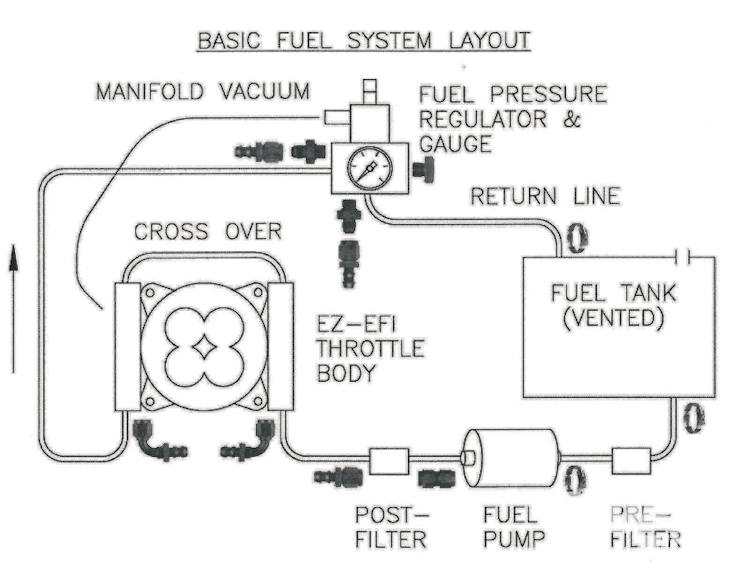
This is a typical aftermarket electronic fuel injection setup. Often the electric fuel pump is located inside the fuel tank with its own filter. A good inline fuel filter is still a very good idea to plumb between the fuel tank and the fuel injection unit on the engine with a quality fuel pressure gauge after the filter. Since electronic fuel injection operates at a much higher fuel pressure, a 0-100 pound gauge is required here.
Say you saw it here on © ChevelleWorld

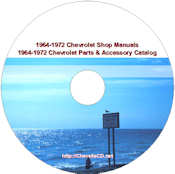
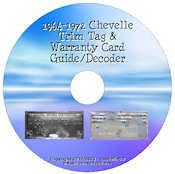
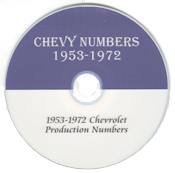
Want more in-depth information on 1964-1972 Chevelles? My Facts and SS Guide
program CD, my Shop Manuals & Parts Catalog program DVD, and my 1964-1972
Trim Tag, Warranty Card program CD and my Chevy Numbers program
CD. Check them and other informative
program CDs at my https://chevellecd.net
website.

 1964 Chevelle
1964 Chevelle 1965 Chevelle
1965 Chevelle 1966 Chevelle
1966 Chevelle 1967 Chevelle
1967 Chevelle 1968 Chevelle
1968 Chevelle 1969 Chevelle
1969 Chevelle 1970 Chevelle
1970 Chevelle 1971 Chevelle
1971 Chevelle 1972 Chevelle
1972 Chevelle


